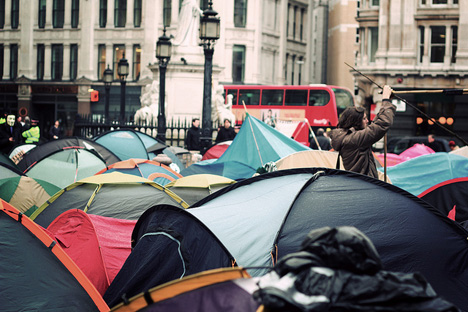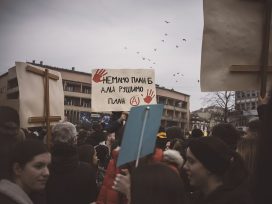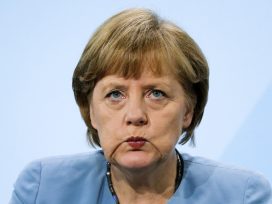In his posthumous book on the state, Pierre Bourdieu blamed Jürgen Habermas for having created and spread the notion of Öffentlichkeit (“the public space, this detestable concept that comes from Germany”). I don’t share the French sociologist’s point of view. The concept of the public sphere has been criticized over and over, but has shown a striking resilience and has been characterized by diverse and inventive updates. Although we should not take it as a template and should not use it in a routinized way, its plasticity allows us to rethink the multiple networks, relationships and forums through which opinions are shaped and diffused. Of course, we should not mistake the concept for an account of reality. Spinoza warned us once and for all: the concept of dog does not bark. The “public sphere” is more a regulatory idea about free and open debate than a historical-sociological analysis of the multiple layers of conversations that led to our modernity. Taking the notion seriously does not mean that we should discard hegemony, unequal access to symbolic resources and domination.

An improvised public library, one of many at Occupy interventions around the world, in a tent at Occupy London, 22 October 2011. Photo: shaundon. Source:Flickr
I shall not attempt to give a full answer to the huge question: what happened to the Öffentlichkeit in the past 30 years? This would be absurd and pretentious. Instead, I would like to try to provide a sort of “portable” framework that would help us avoid the double trap of undue pessimism (the public sphere has disappeared in the icy water of financial capitalism, European intellectuals are all the victims of neo-liberalism) and naive optimism (the Arab Springs will grow and multiply, participative democracy is on the way all over the world).
The past 30 years can be characterized by a conjunction of powerful moves that have shaken the grounds of the post-World War II order of things:
– an overwhelming technological change with respect to communication systems (the triumph of the Internet, its consequences for the printed world and the irresistible rise of social networks);
– the brutal and largely unexpected collapse of existing socialism;
– the rise of NGOs and the shrinking of the nation-state;
– the domination of a knowledge society or expert society that has contributed to restructuring intellectual work and the intellectuals’ presentation of self in the public sphere;
– the extension of markets and the generalization of commodification;
– the emergence of new powers (soon to be new superpowers) and the changing place of Europe in the world system.
Globalization (whatever the limitations of this catchword) has gone along with the emergence of neo-nationalisms, particularly in Europe: revamped populisms are now significant forces on both sides of the former Iron Curtain. They seem to be a more powerful agent of European homogenization than the very modest attempts to delineate common cultural interests (the European capitals of culture come to mind immediately at this point). New contradictions have emerged and now shape economic markets as well as social life. In this landscape, the status of Europe is somewhat unclear. On the one hand, it is still a centre of power, in its hard and soft versions. Although the mainstream channels of communication and influence are no longer located on the continent, European technology, taste and lifestyles continue to be a global reference and norm. On the other hand, Europe appears as the land of disillusion and disenchantment. This is not an entirely new phenomenon. The French journal Esprit titled one of its issues at the end of the late-1990s “The cultural falling back of Europe” (Le repliculturel de l’Europe). We, the people of Europe, no longer think of ourselves as the symbolic and normative workshop of the world. We fear that we shall soon be turned into the dancing masters of the world, echoing Marx’s characterization of European aristocrats after the French Revolution as the dancing masters of Europe, doomed to sell, sometimes at a low price, what Bourdieu called their embodied social and cultural capital. We have become bipolar: on some days we tend to think that technological change will bring about the equalization of conditions through a form of electronic horizontality and that the electronic peace will be perpetual. On gloomy days, we fear that the decline of the welfare state will foster the destruction of our lifestyles, particularly when it comes to cultural habits. Our anxieties do not lead us, however, to consider that the cultural pleasures of life are the outcome of long struggles to establish a democratic public sphere.
I shall begin with a reassessment of the notion of a cultural public sphere and give an account of its possible uses for our discussion. I shall then turn to the emerging forms of mobilization that have flourished all over the world in recent years in order to envisage the extent to which a form of public space is constructed or reconstructed. I shall conclude by evoking my own paradoxical experience in a post-socialist country.
What should we do with the notion of a public sphere?
The notion of a cultural public sphere was coined by Jim McGuigan after Habermas’ The Structural Transformation of the Public Sphere (1962). McGuigan uses the gap between the actual and the ideal to save the concept in spite of its two main shortcomings: the particular interests of the bourgeoisie mistaken for the universal interest and the way in which the market dominates the communications system, such that turns citizens into mere consumers.
The first objection (the category of the universal is in fact particular) is massive, but can be answered in two ways. The first one is present in Cornelius Castoriadis’s theory of democracy. Athens can be considered as the “germ” or seed of the idea despite the fact that only a social minority benefited from it and that it depended on slavery to function adequately. This germ is both a beginning and an idea for regulation that would develop in the future. The second response to this objection is already formulated in McGuigan’s work and brings together Habermas’ concept and a Marxist approach: the opening of a bourgeois public sphere not only marked the dominance of a new class, it also gave rise to contradictions in the form of new claims from the working-class, as well as from women and minorities. The second objection to the idea of a public sphere is certainly older than the creation of Habermas’ Öffentlichkeit and concerns the political apathy that has plagued democratic societies for decades.
McGuigan’s revision of the notion of the public sphere is based on the inclusion of mass-culture. He writes:
In the late modern world, the cultural public sphere is not confined to a republic of letters – the eighteenth-century literary public sphere – and “serious” art, classical, modern or, for that matter, postmodern. Rather, it includes the various channels and circuits of mass-popular culture and entertainment, the routinely mediated aesthetic and emotional reflections on how we live and imagine the good life.
Cultural studies have done a lot to attach a raison d’être to popular feelings and emotions usually considered merely the consequences of symbolic domination or deprivation. In doing so, they have downplayed the powerful effects of mass-produced entertainment and information on people’s minds. We travelled too quickly from an Adornian contempt for the culture industry to the enchanted world of affective populism, insisting on people’s creativity under any communicative circumstance. In this vision of the public sphere, mass media and democracy are synonymous: reality and game shows are the contemporary forums where politics and culture meet. Television is the continuation of politics by other means, so to speak.
McGuigan does not limit the public sphere to that mass-media layer, but distinguishes three stances: uncritical populism, radical subversion and critical intervention. In the first, consumer sovereignty “goes unquestioned”. Consumers are active citizens and their consumption is a way of voting for different cultural and political offers. Starbucks is the equivalent of the eighteenth-century coffeehouse.
At the other end of the spectrum, radical subversion considered the mass-produced world of infotainment as the problem and not the solution: it prevents rather than shapes democracy. The radical critique of the media, by no means a new genre, has undergone new developments. New Radicalism has contributed to shaping the most recent social movements that have occupied the public sphere since the beginning of this century, but does not have a monopoly over emerging forms of protest – in the context of which, it is as if different historical strata of public expression have merged. Consider these remarks from US blogger, Mark Besselink: “When I first saw the students of UC Davis sprayed with pepper by the police, my mind went back to the Sixties. For a brief yet painful moment, it was like we’d gone back in time. Maybe the counterculture has returned. Maybe people are willing to speak up again, ready to exercise their rights to freedom of speech and freedom of assembly in order to promote a different view of the world” (Bessinger 2011). One could also invoke the anarchic skill of the hackers as defined by Facebook founder Mark Zuckerberg in 2012: “In reality, hacking just means building something quickly or testing the boundaries of what can be done. Like most things, it can be used for good or bad, but the vast majority of hackers I’ve met tend to be idealistic people who want to have a positive impact on the world.” And finally, the legacy of the violent political culture embodied in the Schwarzer Block in the late-1980s and 1990s. These heterogeneous attitudes mostly bring together the children of the middle-classes into a disruptive style based on highly ritualized and celebrated actions. For the true radicals, there is no such thing as a public sphere, and a totally new political space must be created out of the riot, out of the fusion of individuals into a collective “in fusion”. Alain Badiou’s praise of uprisings in his theory of event is not very different from Sartre’s “groupe en fusion” depicted in his 1960 Critique of Dialectical Reason (Badiou 1988). Both theories are based on the hot properties of the moment but do not go very far in describing what could be a democratic space of communication. The radicals are looking for the return of authenticity and spontaneity in a world made totally artificial by the mass-media. Can symbolic subversion destroy the power of big corporations or is it doomed to be integrated by the new spirit of capitalism, as Luc Boltanski and Eve Chiapello showed in their now classic 1999 book The New Spirit of Capitalism? Up to now, radicalism has not demonstrated its capacity to shake economic power: more than that, huge demonstrations seem to go unnoticed as if they no longer pose a threat. Think of the tremendous mobilizations in Spain, Portugal and Greece, but also of what’s going on in eastern European countries, where the people who take to the streets are less likely to show weariness. “Is anyone listening to us”, one of my Bulgarian students asked me recently? I had no clear answer.
McGuigan favours the third stance on the public sphere, as do I, at least if we can find a way of enforcing it. He calls it critical intervention, and it is undoubtedly closer to the idea of a public sphere. This position, McGuigan argues, “combines the best of uncritical populism – an appreciation of the actually existing cultural field – with the best of radical subversion, producing a genuinely critical and potentially popular stance.” Who could object to that? Unfortunately, McGuigan does not give us many clues as to how to turn critical intervention into an operative mode. He simply mentions some BBC shows, such as Comic Relief, or Bremner, Bird and Fortune. Television, still the most popular form of entertainment, remains the central site of the public sphere and may trigger powerful forms of independent criticism. I have tried to make sensible use of the notion of critical intervention, mainly in my research on the public debates during the Avignon Festival, where the rather utopian conditions of Öffentlichkeit are provided by the networks of éducation populaire. But, even under the relatively democratic conditions of this festival, theatre is today too much of a minority practice to re-enact the postwar utopia of Jean Vilar, that of the participant spectator, as the basis for a rather fruitful definition of what the public sphere could be. McGuigan himself has no idea about the social impact of those critical interventions. One can bet that they are limited. I would suggest that they are “prototypes” of a democracy to come, and that this is the main reason to value them.
Social media and emerging forms of mobilization
Technological optimism has been for a long time the fellow-traveller of radical political change. It is not easy to find counter examples. It seems that every scientific and technological advance involves the promise of full equality, from the printing press to Twitter through the legendary Model T Ford. In spite of historical evidence to the contrary, we continue to think that technology is the bearer of new, and more democratic, types of social relations, at least when it is used in a rational and collective manner. This is particularly true if we consider the realm of communication. The arrival of radio prompted utopian outlooks in a manner hard to imagine nowadays. 3D printing is undoubtedly the technology that triggers the most all-encompassing illusions today: some daydreamers even consider it the tool to facilitate a quick victory of communism, as if Lenin had never said that Communism is the power of the Soviets plus electrification: as if communism were in fact electrification itself.
The lasting power of this illusion must draw the sociologist’s attention, as must the emerging properties of new networks. I certainly do not want to replay the disenchantment of the world, an old sociological trick, but we must distance ourselves from the apparent technical revolutions of the public sphere: that is to say what we consider the consequences of social media for the ways we liaise together, locally or at a distance. What has been called the Arab Spring, and the conjunction of associated protests with movements such as Los Indignados or the diverse forms of Occupy, have captured our imagination because they associated two different properties. First, the capture of speech (Michel de Certeau’s prise de parole) in a public sphere, or even better, in the Arab case, the production of a public sphere through the capture of speech. The capture of speech is necessarily disruptive. In the Arab Spring it has been creative too, producing a kind of short-circuit in the process of creating a Habermasian Öffentlichkeit, although the social and spatial conditions of its emergence have been repeatedly destroyed by the Arab dictatorships. Despite the very different circumstances of the recent forms of “occupation”, these social movements have a common denominator: what is most striking about them all is the concrete transformation of the urban space on a sustainable basis. The citizens occupy a space that is no longer the workplace or the symbol of an oppressive power, but the public space as such, redefined and made common and horizontal. The urban space is thus redefined and loaded with new properties rather than momentarily crossed. The tent is the symbol of the new activism. The camp is distinguished from the traditional demonstration as it goes beyond the mere statement of a protest or of a claim about the social world. It signifies concretely the possibility of another world, a prefiguration of it, as it was paradigmatically the case in Zucotti Park as well as in Tahrir Square. The Squares share a dual existence with respect to communication: first, the collective works to represent itself to itself through a very reflective construction in terms of co-presence and horizontality. As compared to the unilinear flux of a demonstration, Occupy produces a form of collective visibility. One does not see only the person who marches next to one, but also the community of those who collectively capture speech. Further, Occupy is an address to the world, since the event has been directed from the start in the direction of the global scene, simultaneously through the industrial and capitalist networks (televisions, news agencies) and the informal networks (Facebook in particular) opened by new companies that exploit the Internet with all the ambiguities involved. In the past, I have had the opportunity to analyse at what they now call a mega-event, the Cannes Film Festival, the mingling of real action, of images and of images of images in a festival devoted to moving images. The multiplication of images and simulacra is essential to spectators’ experience of being present in a filmic space: a large screen reproduces images of celebrities climbing the famous stairs and the spectator’s eye can roam from the actual stairs to their electronic representation. The constant use of video announces the future availability of those images as archives of the event. Smaller screens are to be found in various locations at the festival: one can buy or sell a movie without ever missing anything that is happening on the legendary red carpet on the stairs. Images are reflective and this reflective dimension is now present in every demonstration of collective strength. One can measure the force of an event by looking at its capacity to multiply images.

Occupy tents, London, 28 November 2011. Photo: Kyoko Escamilla. Source:Flickr
In the new spatial organization produced by the Occupy movement, what is at stake is the affirmation according to which another world is possible. Horizontality can be produced within the here and now, the hic et nunc, of the gathering. This explains why the social relationships and their figuration are at the centre of all discussions. Moreover, the repertoire of action has been thoroughly renewed: just take Tentifada in Israel or the “I am an Egyptian” placard carried by a citizen of Tel Aviv. Quotations and replications have characterized the spread of protests simultaneously grounded just as much in local spaces as they are open to the global circulation of live media coverage. More than the limited transnational movements against international institutions such as the GATT or WTO, which united mostly regular activists, the occupations have produced novelty and fresh transferable resources. The family resemblances among recent movements owe much to the globalized transmission of events by diverse media. The forms of communication, their replication and their mutual borrowings are not, however, radically new. All historical conjunctures of events can be analysed in the same way, the reverberations of the French Revolution around the world being a good historical example. But the new communication technologies have added two elements:
– they are based on instantaneous, “real-time” transmission that wipes out not only the time spent communicating but also the cost of communication;
– they allow actors to be present at multiple scenes. Thus, during the 2011 Nakba Day in Palestine one could observe protagonists taking to the streets of Ramallah while receiving instant news through Facebook and Twitter and giving advice to the demonstrators on the West Bank or in Gaza.
The notion of the “capture of speech” remains valid in describing this new type of movement. When he attempted to analyse the uprisings of May 1968 in France, Michel de Certeau was mainly interested in the crisis of political representation (Certeau 1994). The act of contestation is a speech act and raises the issue of the relationship between saying and doing in the political sphere. Do those who take the floor really want to do what they say, that is, for example, to spark a revolution, or is the protest limited to language? For those who take the floor deny the right of representatives to speak in their name or on their behalf. They break the agreement that allows the functioning of democracies without giving any guarantee concerning the effective dimension of changes in power relations. The ambivalent relationship between saying and doing is the core of Certeau’s questioning and it remains at the centre of the debate today. The capture of speech that has been so striking in recent social movements is undoubtedly embedded in some form of radical critique of a system of power relations and of political representation. But at times, it seems to be still caught in a system of representation in which roles are cast once and for all. In short: is the event always doomed to express its irreducible singularity or its ephemeral character and end swiftly in disenchantment? Or is it, on the contrary, able to propel a new form of democracy as distinct from the aggiornamento of an exhausted democratic system or praise of the riot as the midwife of political novelty? It is too early to answer.
Two questions can be raised with respect to the new social movements and their claims:
– the first concerns democratic fatigue. The former socialist countries have entered an exhausted world, largely unattractive, and the financial crisis has not improved things. Political apathy or hidden levies and the consequences of intense lobbying and massive corruption have made our democratic model unappealing. But neither a global alternative nor a series of limited improvements seem to be envisaged in the near future;
– the second concerns possibility of a convergence of very different movements: the desire for basic democracy and human rights that has emerged in the Arab world does not have much to do with the middle class discontents of Zucotti Park, although no one would deny the legitimacy of the latter. Different temporalities and heterogeneous resources have shaped these movements. The constitution of a global public sphere where critical interventions can be made beyond the frame of the nation-state requires political innovation. And yet the example of Europe clearly shows that the process is far from certain. Nonetheless, democratic activism remains the necessary condition of critical intervention. So is the new critical space delineated by recent movements limited to a conscious minority and is the majority content with the cheap aestheticization of politics that has dominated the mediasphere during these past decades? The space devoted to critical intervention too often looks like the highly limited electoral system under the constitutional monarchy of nineteenth-century France. General access to critical capacities remains the major political issue of our times.
Hungarian epilogue
Towards the end of November 2013, George Soros, the benefactor of the Central European University at which I teach, evoked the “self-inflicted wounds” of Europe to analyse the consequences of austerity politics. Wounds or strong medicine, the case is disputed. Under the flagship of “open society”, taken from his first mentor Karl Popper, Soros advocated a form of new social democracy and praised state intervention: philanthropists show the path, governments continue and build roads. François Hollande would not dare to indulge in that type of discourse. Soros spoke in front of students who, 20 years or so after the fall of communist dictatorships, have rediscovered Marx and Lenin with enthusiasm. They welcome Badiou, Rancière and Zizek as rock stars and they enjoy a commodified form of radicalism. But in the meantime, they spend a lot of time preparing their applications to good US universities. The small auditorium on Nador Street, Budapest, concentrated all the ambivalences of intellectual life in Europe today. Teaching in Karl Popper and Ernst Gellner classrooms, I was afraid of being trapped in a neo-liberal institution. I could not imagine when I landed at Franz Liszt airport, that so many young Marxists would surround me. A vibrant public sphere is made of those misunderstandings.
Bibliography
Badiou, Alain, L’Etre et l’événement, Editions du Seuil, 1988
Bessinger, Allan “Is the Occupy movement the counterculture of the new millenium?”, 29 November 2011, www.allanbesselink.com/blog/rhubarb/899-is-the-occupy-movement-the-counterculture-of-the-new-millennium?tmpl=component&type=raw
Boltanski, Luc and Eve Chiapello, Le nouvel esprit du capitalisme, Gallimard, 1999
Bourdieu, Pierre, Sur l’Etat, Editions du Seuil, 2012
Certeau, Michel de, La prise de parole et autres écrits politiques, Hachette, 1994 (first published, 1968)
Fabiani, Jean-Louis, “Images d’images: Le Festival de Cannes vécu et transmis en direct”, Protée 31, no. 2 (Autumn 2003): 57-61
Fabiani, Jean-Louis, L’Education populaire et le théâtre: Le public d’Avignon en action, Presses universitaires de Grenoble, 2008
Mc Guigan, Jim, “The cultural public sphere”, European Journal of Cultural Studies 8 (2004): 427-43
Zuckerberg, Mark, “S-1 letter”, 1 February 2012, techcrunch.com/2012/02/01/facebook-ipo-letter/








